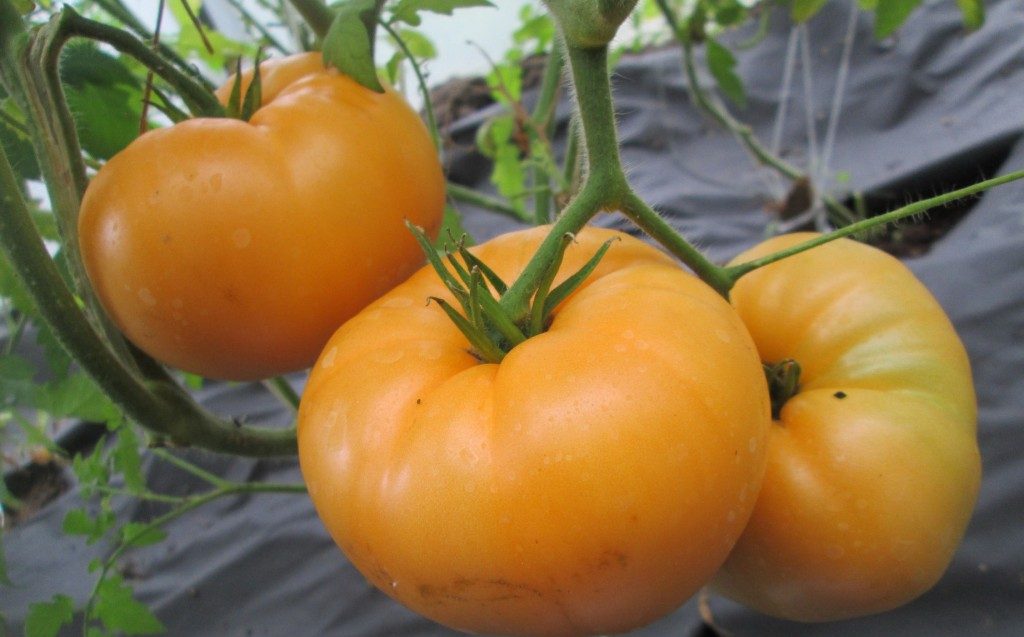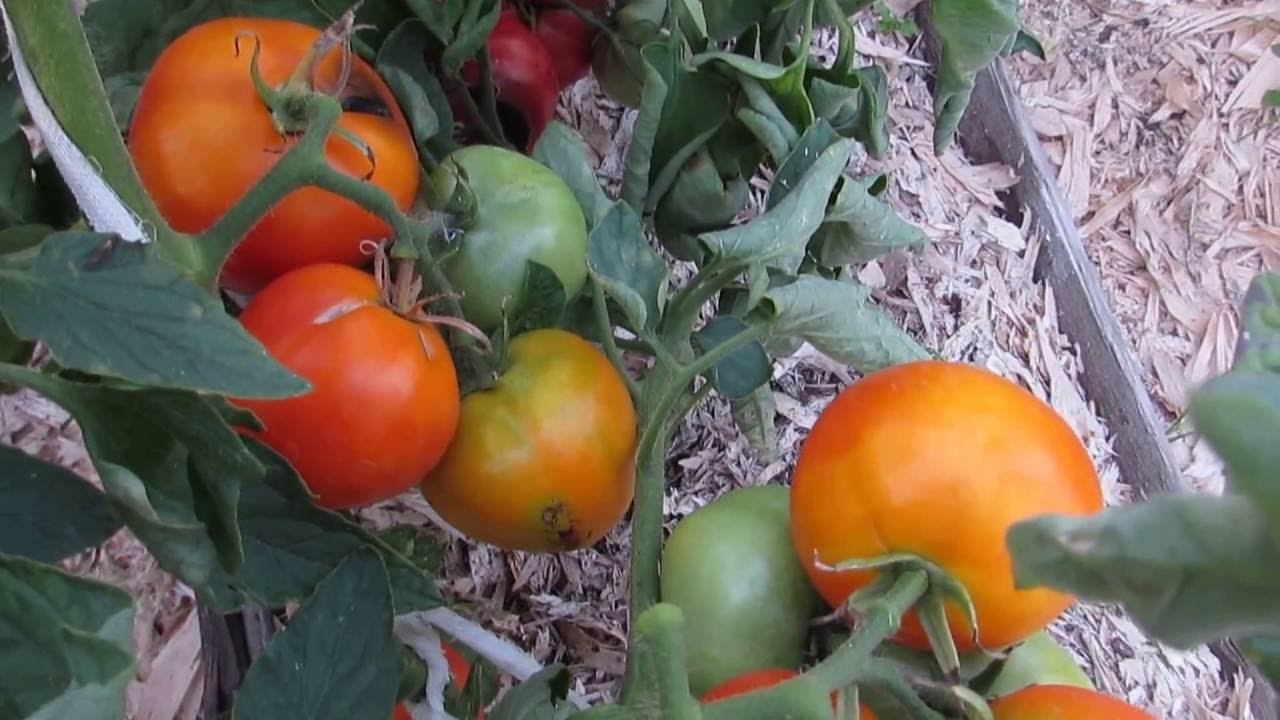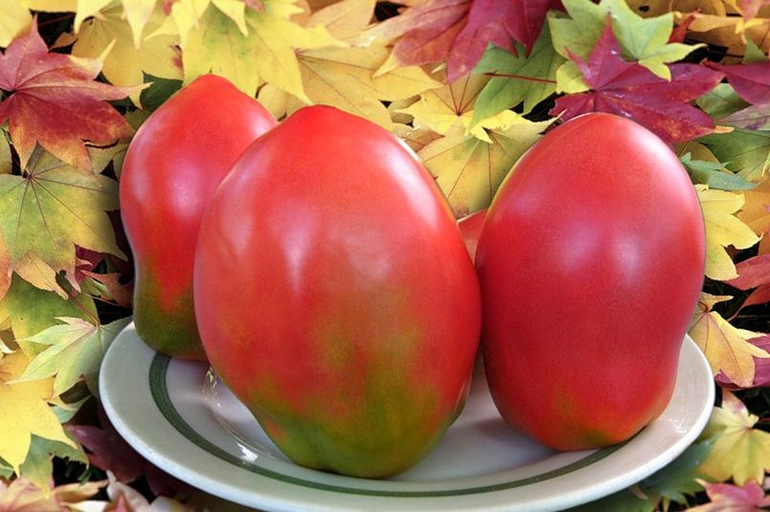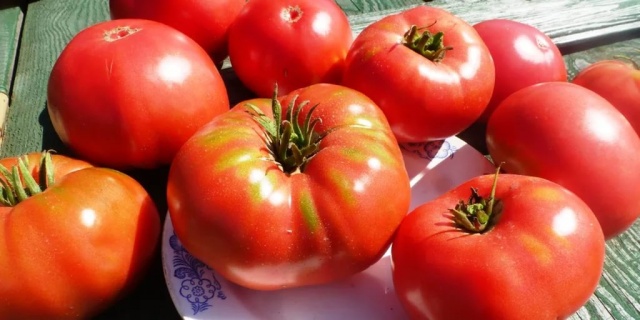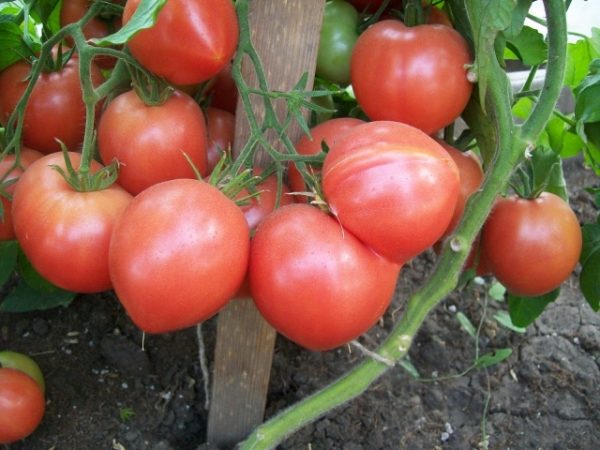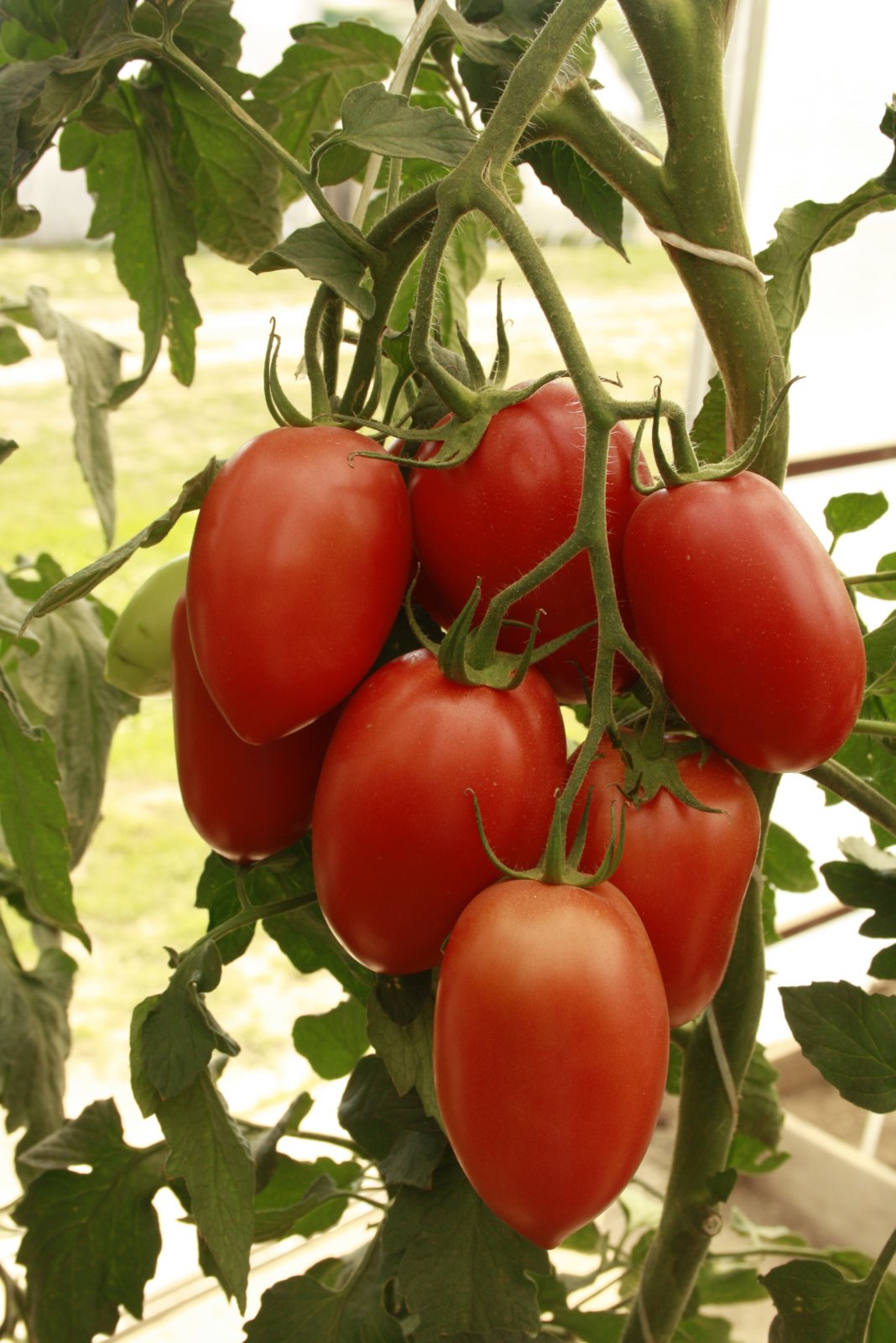Tomato is a vegetable crop belonging to the genus Solanaceae. In their historical homeland, South America, tomatoes grow like wild perennials. From America, the tomato first spread to Europe under the guise of an ornamental shrub, and only then appeared in Russia. It was here that the scientist Bolotov invented a method of ripening tomatoes, after which the fruits began to be eaten. Despite the fact that the tomato is a vegetable, from the point of view of botany, its fruits are berries. And in the early 2000s, the European Union did recognize tomatoes as fruits. Tomatoes are the world leader in all cultivated crops, followed by bananas and apples.
The orange giant attracts gardeners, first of all, with its non-standard orange color. This is a very young variety, which very quickly gained a leading position, thanks to its large, fleshy fruits, decorative appearance and a rather “docile nature”.
Orange giant is a miracle of Russian breeding from the company NK "LTD", included in the Register in 2001, although it must be admitted that this is far from the first variety with such a fruit color and similar characteristics. Nevertheless, it was this giant that became widespread both in the southern regions and in the north of Russia.
Specifications
The orange giant is a delicious tomato variety. They are used to make juice, lecho and tomato sauces. They are not suitable for canning with whole fruits, due to their large size. But for canned salads and other snacks where chopped tomatoes are required, the Giant will be an excellent choice. Fresh, this tomato is good for any dish: salads, slices, sandwiches. This variety of tomatoes is often prescribed by doctors for baby and medical nutrition, since it contains a large amount of carotene, vitamins and a whole range of useful minerals. The skin of the fruit is dense and the flesh is fleshy.
The bush is often divided into 2 trunks. To get large fruits, you need to form 1 main trunk, so it is better to remove all stepchildren (side shoots). If desired, they can be rooted, getting new bushes of the Orange Giant. In the second decade of June, when the tomato has 5 brushes, the top must be pinched so that the plant does not waste energy on the growth of the stem and branches, but directs energy to the formation of ovaries. On one brush, you need to leave 2-3 ovaries. According to the ripening period, the variety belongs to medium early.
Tomato Orange giant: characteristics and description of the variety
| Yield | 5 kg per bush |
|---|---|
| Fruit weight | 300-700 g. |
| Number of fruits per cluster | 4-6 pieces |
| Ripening period | 4 months |
| Bush height | Protected ground - up to 2 m; |
| Open ground - up to 1 m | |
| Fruit shape | Heart-shaped with pointed tip |
Growing features
Getting a rich harvest directly depends on compliance with the rules of planting and care:
- Growing seedlings. Dressing the seeds with a potassium permanganate solution helps get rid of infections. It is very important to observe the dosage and the period of soaking. Do not think that a concentrated solution or long-term treatment will have a positive effect on seed quality. The effect is the opposite: the germination rate drops sharply.Therefore, you need to follow the rules of soaking: the seeds are laid out so that they do not touch each other, a 1% solution of potassium permanganate is made and left for 15 minutes at room temperature. After processing, the seeds are ready for sowing. The optimal time is the first decade of March (about 1.5-2 months before planting in open ground). Seeds can be sown in separate cells or in a common container, followed by transplanting into pots in the phase of 3 true leaves. For seedlings, it is best to take a nutritious soil that will provide saturation with the necessary substances. Germination temperature - +23 .. + 25˚С. After the shoots appear, the temperature of the content must be reduced, for example, the boxes must be taken out to the balcony. The seedling soil should be slightly moistened. To accelerate growth and development, it is beneficial to make 2-3 top dressing: nitrogenous - for the development of the stem and leaves, potassium - for the accumulation of strength before the upcoming fruiting. In regions with cool summers, 10 days before planting in the ground, the seedlings should be hardened. To do this, you need to take it out into the street every day for a couple of hours. If the weather permits, then in the last days before planting the plant can be left in the greenhouse;
- Landing. In the third decade of May, the plant is ready for transplanting in a greenhouse or open ground. Despite the fact that the plant calmly tolerates temperature extremes, planting should be started when the average daily temperature is at least + 15 ° C. The distance between the bushes is 0.5-0.7 m. There should be 2-3 bushes per 1 m2. You should not save space and plant bushes more compactly, this will negatively affect the development of the plant and its yield. Also, lack of ventilation due to the high density of the branches can lead to fungal diseases. When landing in open ground, care should be taken to ensure that the landing site is protected from wind and drafts and has sufficient lighting. Growing in open ground is recommended only for the southern regions; in all other cases, it is better to choose protected ground (greenhouses, hotbeds). Before planting, you need to dig up the soil, break all the lumps, remove all weeds and roots, add organic matter: humus, compost, rotted manure (you cannot use fresh manure, the plant will burn). The plant is buried at the same level as when it was grown in a container; it is not necessary to additionally cover the stem with earth. The soil around the trunk is well crushed and watered. You can immediately put props;
- Top dressing. This is the most important step in caring for this tomato variety. Without them, getting a good harvest will not work. The first feeding should be done at the time of planting. During the phase of active growth, flowering and fruit formation, at least 3-4 additional feeding should be done. From planting to flowering, you need to fertilize tomatoes with phosphorus and potassium. This allows the fruit to gain height and weight and be enriched in nutrients. When the fruits begin to set, it is worth switching to complex fertilizers. Freshly cut grass (any that is on the site) is an excellent fertilizer for young bushes. It is poured with water in a ratio of 1:10 and insisted for 1.5 weeks. The finished infusion is diluted with water 1:15. You can fertilize tomatoes with this infusion on the tenth day after planting. Pour about 2 liters of infusion under each bush. By adding additional ingredients, you can get a complex fertilizer that is suitable for feeding throughout the season. In addition to grass for 10 liters of water, add 0.15 kg of ash and chicken droppings. Against the fungus, you can add rotted hay, crushed egg shells and bone meal 1 handful each;
- Care. Unpretentiousness is a varietal feature of the Giant. However, a garter is extremely necessary for the stems, since the fruits are poured large, and the branches do not have much strength and break off. The plant does not impose requirements for loosening, mulching, special lighting, so the procedures should be carried out in a standard way, if necessary. Loosening and weeding should be periodic, when the earthen lump is sufficiently compacted.It is impossible to go deep into the soil, there is a risk of damaging the roots. It is better to loosen the soil along the aisles, slightly going into the near-stem space. Watering should be moderate; excess moisture makes the fruits sour. For irrigation, settled warm water is used. The best time for watering is evening;
- Pest control. The variety is resistant to most diseases, but preventive treatments will not be superfluous. Daily ventilation of the greenhouse is a preventive measure against fungal diseases. If signs of late blight or alternaria are found (yellowing of leaves, brown spots on the leaves), then the affected leaves must be removed and destroyed. Fungal diseases are possible when tomatoes have been grown in the same place for many years in a row. Once every 5-7 years, the planting site must be changed, taking into account the rules of crop rotation. The best predecessors are root crops. Acceptable predecessors: cabbage, onions and cucumbers, but additional soil fertilization will be required before planting. In open ground, tomato plantations can be attacked by aphids or whites, less often by thrips, sawfly and moth. Treatment of bushes with Bison or other drugs of a similar spectrum of action helps to get rid of them quickly enough;
- Harvesting. Fruit ripening begins in August and lasts about 2 months. The tomatoes are removed as they are poured. Ripening occurs at home.
Advantages and disadvantages of the variety
| pros | Minuses |
| High safety | Weak branches |
| With proper care, giant fruits grow with a good presentation, even, smooth, without cracks | Fertilizer sensitivity, you need to carefully plan the timing of fertilizing in the phase of active growth |
| Not susceptible to diseases and pests | |
| Not picky about growing conditions | |
| Excellent taste | |
| The resulting seed is suitable for subsequent planting |
The orange giant is a very beautiful, tasty and easy-to-care tomato variety. It is perfect for the first experience in growing tomatoes. The giant is a good choice for open field and greenhouse cultivation, for the northern and southern regions, for personal consumption and for sale.
